About the Firewall Mode
The ASA supports two firewall modes: Routed Firewall mode and Transparent Firewall mode.
About Routed Firewall Mode
In routed mode, the ASA is considered to be a router hop in the network. Each interface that you want to route between is on a different subnet. You can share Layer 3 interfaces between contexts.
With Integrated Routing and Bridging, you can use a "bridge group" where you group together multiple interfaces on a network, and the ASA uses bridging techniques to pass traffic between the interfaces. Each bridge group includes a Bridge Virtual Interface (BVI) to which you assign an IP address on the network. The ASA routes between BVIs and regular routed interfaces. If you do not need multiple context mode or clustering or EtherChannel or VNI member interfaces, you might consider using routed mode instead of transparent mode. In routed mode, you can have one or more isolated bridge groups like in transparent mode, but also have normal routed interfaces as well for a mixed deployment.
About Transparent Firewall Mode
Traditionally, a firewall is a routed hop and acts as a default gateway for hosts that connect to one of its screened subnets. A transparent firewall, on the other hand, is a Layer 2 firewall that acts like a “bump in the wire,” or a “stealth firewall,” and is not seen as a router hop to connected devices. However, like any other firewall, access control between interfaces is controlled, and all of the usual firewall checks are in place.
Layer 2 connectivity is achieved by using a "bridge group" where you group together the inside and outside interfaces for a network, and the ASA uses bridging techniques to pass traffic between the interfaces. Each bridge group includes a Bridge Virtual Interface (BVI) to which you assign an IP address on the network. You can have multiple bridge groups for multiple networks. In transparent mode, these bridge groups cannot communicate with each other.
Using the Transparent Firewall in Your Network
The ASA connects the same network between its interfaces. Because the firewall is not a routed hop, you can easily introduce a transparent firewall into an existing network.
The following figure shows a typical transparent firewall network where the outside devices are on the same subnet as the inside devices. The inside router and hosts appear to be directly connected to the outside router.

Management Interface
In addition to each Bridge Virtual Interface (BVI) IP address, you can add a separate Management slot/port interface that is not part of any bridge group, and that allows only management traffic to the ASA. For more information, see Management Interface.
Passing Traffic For Routed-Mode Features
For features that are not directly supported on the transparent firewall, you can allow traffic to pass through so that upstream and downstream routers can support the functionality. For example, by using an access rule, you can allow DHCP traffic (instead of the unsupported DHCP relay feature) or multicast traffic such as that created by IP/TV. You can also establish routing protocol adjacencies through a transparent firewall; you can allow OSPF, RIP, EIGRP, or BGP traffic through based on an access rule. Likewise, protocols like HSRP or VRRP can pass through the ASA.
About Bridge Groups
A bridge group is a group of interfaces that the ASA bridges instead of routes. Bridge groups are supported in both transparent and routed firewall mode. Like any other firewall interfaces, access control between interfaces is controlled, and all of the usual firewall checks are in place.
Bridge Virtual Interface (BVI)
Each bridge group includes a Bridge Virtual Interface (BVI). The ASA uses the BVI IP address as the source address for packets originating from the bridge group. The BVI IP address must be on the same subnet as the bridge group member interfaces. The BVI does not support traffic on secondary networks; only traffic on the same network as the BVI IP address is supported.
In transparent mode: Only bridge group member interfaces are named and can be used with interface-based features.
In routed mode: The BVI acts as the gateway between the bridge group and other routed interfaces. To route between bridge groups/routed interfaces, you must name the BVI. For some interface-based features, you can use the BVI itself:
-
Access rules—You can configure access rules for both bridge group member interfaces and for the BVI; for inbound rules, the member interface is checked first. For outbound rules, the BVI is checked first.
-
DHCPv4 server—Only the BVI supports the DHCPv4 server configuration.
-
Static routes—You can configure static routes for the BVI; you cannot configure static routes for the member interfaces.
-
Syslog server and other traffic sourced from the ASA—When specifying a syslog server (or SNMP server, or other service where the traffic is sourced from the ASA), you can specify either the BVI or a member interface.
If you do not name the BVI in routed mode, then the ASA does not route bridge group traffic. This configuration replicates transparent firewall mode for the bridge group. If you do not need multiple context mode or clustering or EtherChannel or VNI member interfaces, you might consider using routed mode instead. In routed mode, you can have one or more isolated bridge groups like in transparent mode, but also have normal routed interfaces as well for a mixed deployment.
Bridge Groups in Transparent Firewall Mode
Bridge group traffic is isolated from other bridge groups; traffic is not routed to another bridge group within the ASA, and traffic must exit the ASA before it is routed by an external router back to another bridge group in the ASA. Although the bridging functions are separate for each bridge group, many other functions are shared between all bridge groups. For example, all bridge groups share a syslog server or AAA server configuration. For complete security policy separation, use security contexts with one bridge group in each context.
You can include multiple interfaces per bridge group. See Guidelines for Firewall Mode for the exact number of bridge groups and interfaces supported. If you use more than 2 interfaces per bridge group, you can control communication between multiple segments on the same network, and not just between inside and outside. For example, if you have three inside segments that you do not want to communicate with each other, you can put each segment on a separate interface, and only allow them to communicate with the outside interface. Or you can customize the access rules between interfaces to allow only as much access as desired.
The following figure shows two networks connected to the ASA, which has two bridge groups.
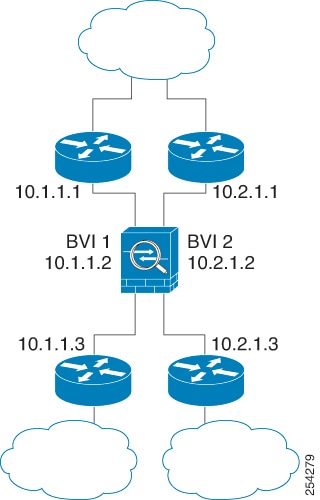
Bridge Groups in Routed Firewall Mode
Bridge group traffic can be routed to other bridge groups or routed interfaces. You can choose to isolate bridge group traffic by not assigning a name to the BVI interface for the bridge group. If you name the BVI, then the BVI participates in routing like any other regular interface.
One use for a bridge group in routed mode is to use extra interfaces on the ASA instead of an external switch. For example, the default configuration for some devices include an outside interface as a regular interface, and then all other interfaces assigned to the inside bridge group. Because the purpose of this bridge group is to replace an external switch, you need to configure an access policy so all bridge group interfaces can freely communicate. For example, as in the default configuration, set all the interfaces to the same security level, and then enable same-security interface communication; no access rule is required.

Passing Traffic Not Allowed in Routed Mode
In routed mode, some types of traffic cannot pass through the ASA even if you allow it in an access rule. The bridge group, however, can allow almost any traffic through using either an access rule (for IP traffic) or an EtherType rule (for non-IP traffic):
-
IP traffic—In routed firewall mode, broadcast and multicast traffic is blocked even if you allow it in an access rule, including unsupported dynamic routing protocols and DHCP (unless you configure DHCP relay). Within a bridge group, you can allow this traffic with an access rule (using an extended ACL).
-
Non-IP traffic—AppleTalk, IPX, BPDUs, and MPLS, for example, can be configured to go through using an EtherType rule.
 Note |
The bridge group does not pass CDP packets packets, or any packets that do not have a valid EtherType greater than or equal to 0x600. An exception is made for BPDUs and IS-IS, which are supported. |
Allowing Layer 3 Traffic
-
Unicast IPv4 and IPv6 traffic is allowed through the bridge group automatically from a higher security interface to a lower security interface, without an access rule.
-
For Layer 3 traffic traveling from a low to a high security interface, an access rule is required on the low security interface.
-
ARPs are allowed through the bridge group in both directions without an access rule. ARP traffic can be controlled by ARP inspection.
-
IPv6 neighbor discovery and router solicitation packets can be passed using access rules.
-
Broadcast and multicast traffic can be passed using access rules.
Allowed MAC Addresses
The following destination MAC addresses are allowed through the bridge group if allowed by your access policy (see Allowing Layer 3 Traffic). Any MAC address not on this list is dropped.
-
TRUE broadcast destination MAC address equal to FFFF.FFFF.FFFF
-
IPv4 multicast MAC addresses from 0100.5E00.0000 to 0100.5EFE.FFFF
-
IPv6 multicast MAC addresses from 3333.0000.0000 to 3333.FFFF.FFFF
-
BPDU multicast address equal to 0100.0CCC.CCCD
-
AppleTalk multicast MAC addresses from 0900.0700.0000 to 0900.07FF.FFFF
BPDU Handling
To prevent loops using the Spanning Tree Protocol, BPDUs are passed by default. To block BPDUs, you need to configure an EtherType rule to deny them. You can also block BPDUs on the external switches. For example, you can block BPDUs on the switch if members of the same bridge group are connected to switch ports in different VLANs. In this case, BPDUs from one VLAN will be visible in the other VLAN, which can cause Spanning Tree Root Bridge election process problems.
If you are using failover, you might want to block BPDUs to prevent the switch port from going into a blocking state when the topology changes. See Bridge Group Requirements for Failover for more information.
MAC Address vs. Route Lookups
For traffic within a bridge group, the outgoing interface of a packet is determined by performing a destination MAC address lookup instead of a route lookup.
Route lookups, however, are necessary for the following situations:
-
Traffic originating on the ASA—Add a default/static route on the ASA for traffic destined for a remote network where a syslog server, for example, is located.
-
Voice over IP (VoIP) and TFTP traffic with inspection enabled, and the endpoint is at least one hop away—Add a static route on the ASA for traffic destined for the remote endpoint so that secondary connections are successful. The ASA creates a temporary "pinhole" in the access control policy to allow the secondary connection; and because the connection might use a different set of IP addresses than the primary connection, the ASA needs to perform a route lookup to install the pinhole on the correct interface.
Affected applications include:
-
CTIQBE
-
GTP
-
H.323
-
MGCP
-
RTSP
-
SIP
-
Skinny (SCCP)
-
SQL*Net
-
SunRPC
-
TFTP
-
-
Traffic at least one hop away for which the ASA performs NAT—Configure a static route on the ASA for traffic destined for the remote network. You also need a static route on the upstream router for traffic destined for the mapped addresses to be sent to the ASA.
This routing requirement is also true for embedded IP addresses for VoIP and DNS with inspection and NAT enabled, and the embedded IP addresses are at least one hop away. The ASA needs to identify the correct egress interface so it can perform the translation.
Figure 4. NAT Example: NAT within a Bridge Group 
Unsupported Features for Bridge Groups in Transparent Mode
The following table lists the features are not supported in bridge groups in transparent mode.
|
Feature |
Description |
|---|---|
|
Dynamic DNS |
— |
|
DHCPv6 stateless server |
Only the DHCPv4 server is supported on bridge group member interfaces. |
|
DHCP relay |
The transparent firewall can act as a DHCPv4 server, but it does not support DHCP relay. DHCP relay is not required because you can allow DHCP traffic to pass through using two access rules: one that allows DCHP requests from the inside interface to the outside, and one that allows the replies from the server in the other direction. |
|
Dynamic routing protocols |
You can, however, add static routes for traffic originating on the ASA for bridge group member interfaces. You can also allow dynamic routing protocols through the ASA using an access rule. |
|
Multicast IP routing |
You can allow multicast traffic through the ASA by allowing it in an access rule. |
|
QoS |
— |
|
VPN termination for through traffic |
The transparent firewall supports site-to-site VPN tunnels for management connections only on bridge group member interfaces. It does not terminate VPN connections for traffic through the ASA. You can pass VPN traffic through the ASA using an access rule, but it does not terminate non-management connections. Clientless SSL VPN is also not supported. |
|
Unified Communications |
— |
Unsupported Features for Bridge Groups in Routed Mode
The following table lists the features are not supported in bridge groups in routed mode.
|
Feature |
Description |
|---|---|
|
EtherChannel or VNI member interfaces |
Only physical interfaces, redundant interfaces, and subinterfaces are supported as bridge group member interfaces. Management interfaces are also not supported. |
|
Clustering |
Bridge groups are not supported in clustering. |
|
Dynamic DNS |
— |
|
DHCPv6 stateless server |
Only the DHCPv4 server is supported on BVIs. |
|
DHCP relay |
The routed firewall can act as a DHCPv4 server, but it does not support DHCP relay on BVIs or bridge group member interfaces. |
|
Dynamic routing protocols |
You can, however, add static routes for BVIs. You can also allow dynamic routing protocols through the ASA using an access rule. Non-bridge group interfaces support dynamic routing. |
|
Multicast IP routing |
You can allow multicast traffic through the ASA by allowing it in an access rule. Non-bridge group interfaces support multicast routing. |
|
Multiple Context Mode |
Bridge groups are not supported in multiple context mode. |
|
QoS |
Non-bridge group interfaces support QoS. |
|
VPN termination for through traffic |
You cannot terminate a VPN connection on the BVI. Non-bridge group interfaces support VPN. Bridge group member interfaces support site-to-site VPN tunnels for management connections only. It does not terminate VPN connections for traffic through the ASA. You can pass VPN traffic through the bridge group using an access rule, but it does not terminate non-management connections. Clientless SSL VPN is also not supported. |
|
Unified Communications |
Non-bridge group interfaces support Unified Communications. |
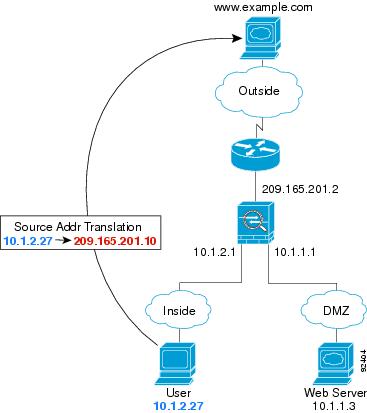

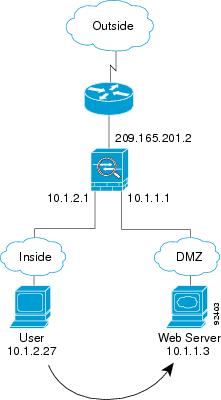
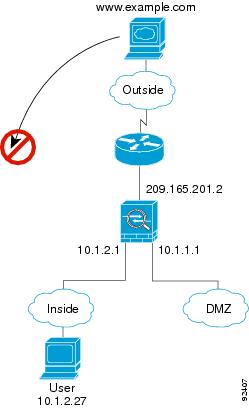
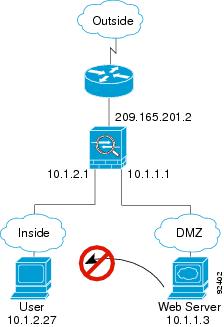
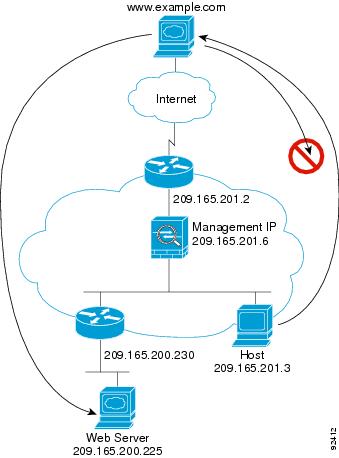


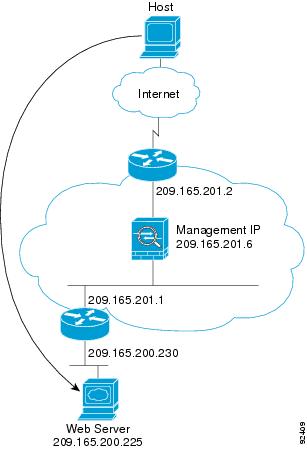

 Feedback
Feedback